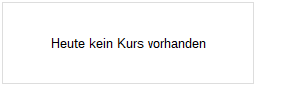
Invesco Perpetual Enhanced Income Limited - Annual Financial Report
PR Newswire
London, November 30
Invesco Perpetual Enhanced Income Limited
Annual Financial Report
For the year ended 30 September 2016
FINANCIAL INFORMATION AND PERFORMANCE STATISTICS
Performance Statistics
| % | |||
| Balance sheet at 30 September | 2016 | 2015 | CHANGE |
| Shareholders’ funds (£’000) | 99,964(1) | 84,322 | +18.6 |
| Net asset value per ordinary share | 74.5p | 68.7p | +8.4 |
| Share price | 77.4p | 69.8p | +10.9 |
| Premium per ordinary share | 3.9% | 1.6% | |
| Gross borrowing | 25% | 39% | |
| Net borrowing | 16% | 33% |
(1) reflects 11,450,000 ordinary shares issued in the year.
| Year Ended | Year Ended | |
| 30 September | 30 September | |
| Total Return | 2016 | 2015 |
| 3 month LIBOR rate | +0.4% | +0.6% |
| Net asset value (‘NAV’)* | +15.7% | +1.5% |
| Share price | +19.0% | +0.2% |
Source: Invesco/Thomson Reuters Datastream.
* The increase in total return NAV includes a 0.32% enhancement to NAV generated by the issue of ordinary shares during the year at a premium.
| Year Ended | Year Ended | |
| 30 September | 30 September | |
| 2016 | 2015 | |
| Revenue | ||
| Gross income (£’000) | 6,729 | 6,697 |
| Net revenue available for ordinary shares (£’000) | 5,743 | 5,753 |
| Dividends per ordinary share: | ||
| – first interim | 1.25p | 1.25p |
| – second interim | 1.25p | 1.25p |
| – third interim | 1.25p | 1.25p |
| – fourth interim | 1.25p | 1.25p |
| – Total | 5.00p | 5.00p |
| Ongoing Charges | ||
| – ongoing charges | 1.32% | 1.28% |
| – performance fee | 0.96% | 0.00% |
| Return per Ordinary Share# | ||
| Revenue return | 4.5p | 4.9p |
| Capital return | 6.3p | (4.2)p |
| Total return | 10.8p | 0.7p |
# The return per ordinary share is the amount of profit (or loss) generated for the financial year divided by the weighted average number of ordinary shares in issue for the financial year.
CHAIRMAN’S STATEMENT
Introduction
The year to the end of September 2016 has been punctuated by several major market events, starting with the fears over China’s slowing economy causing investors globally to sell risk assets in February. Markets then recovered strongly in the months running up to the UK’s European Union referendum, although the subsequent vote to leave the EU resulted in increased market volatility. Investors have now driven the FTSE All-Share Index once again to trade at near all-time highs despite concerns over the UK’s access to the EU common market, post-Brexit.
Over the period, your Company’s Net Asset Value (NAV) total return was 15.7% which compares to a total return for the Merrill Lynch European High Yield Bond index (Sterling Hedged) of 9.5%; the Sterling Investment Grade Bond Index return of 16.3%; and United Kingdom Gilts returning 13.2%. (Source: Bank of America Merrill Lynch.)
The low yields available from large parts of the high yield bond market combined with the greater capital risk associated serves to highlight the importance of a strategy that is focussed on generating a sustainable source of relatively high income combined with lower volatility and capital preservation.
Results for the Year
I am pleased to report that the Company has performed very strongly with a total return to shareholders, based on the share price with dividends reinvested, of 19.0%. The Company’s share price rose from 69.8p at the start of the year to 77.4p, an increase of 10.9%.
As a result of the Company’s good performance as measured by its NAV total return, a performance fee of £848,000 has been earned by the portfolio managers for the year. Further details of the management agreement, including fees, can be found in the annual financial report. In addition, the Company’s strong performance, combined with the shares issued throughout the year (see later in my statement) have resulted in the market capitalisation of the Company exceeding £100 million.
In the current low interest rate environment, your Board continues to believe that shareholders place great value on the Company’s consistent dividend stream and has prioritised revenue generation through investment in relatively high-yielding and secure debt positions. Market yields remain at historically low levels, but even so your portfolio managers have managed to generate a revenue return of 4.5p per share. As I reported in my Chairman’s Statement in last year’s annual financial report, the Board intends that the Company will maintain the annual dividend of not less than 5p per share, paid equally and quarterly, in the absence of unforeseen circumstances. Although there might be an argument to say that the year has seen at least one unforeseen circumstance with the surprise Brexit result, the Board has maintained the 5p annual dividend and the fourth interim dividend of 1.25p per share was declared on 28 September 2016 (2015: 5p).
The shortfall of revenue earned versus dividend paid of 0.5p is the equivalent of £615,000 (2015: £173,000). This has been funded from retained revenue reserve. The Company has over a number of years retained revenue reserve for this very purpose. After payment of the year’s dividend and current shares in issue of 136,056,456, this reserve still covers 1.6 times the annual dividend of 5p.
Borrowings
The Company uses repo financing, which the Board believes remains a flexible and relatively low cost method of providing additional capital when appropriate; and the very low interest rate environment affords the portfolio managers the ability to achieve an attractive profit margin on the investments. The level of gearing is carefully monitored by the Board, fully cognisant of the greater capital volatility which that entails.
The portfolio managers use borrowings to gear the portfolio during most market conditions. The Company’s upper limit for gearing is 50% of shareholders’ funds and the portfolio managers will vary the level according to their view of prevailing market conditions. During the recent very low interest rate environment, the use of gearing has enabled the portfolio managers to maintain a consistent level of income. However, it should be noted that preservation of the Company’s NAV remains a key consideration. As a result, the portfolio managers have sought to focus the Company’s holdings towards generally lower risk bonds as a way to mitigate capital volatility.
The Company started the year with gross borrowing of 39% and, as reported at the half year stage, this was decreased so that at the year end gross borrowing was 25%. Taking the Company’s cash position into account, net borrowing fell from 33% to 16%, and average net borrowing for the year was 21.0% (2015: 30.6%). As at 25 November 2016 (the latest practical date before publication) the level of borrowing is 24.5% (gross) and 19.5% (net).
Share Discount/Premium and Share Issuance
The Board monitors the price of the Company’s shares in relation to their NAV and the premium/discount at which they trade. Throughout the year the shares traded at a premium, and within the range 0.2% to 4.4%. In order to satisfy market demand the Company issued 11,450,000 new shares at an average price of 73.25p during the year to 30 September 2016. This enhanced the NAV by £286,000 (0.3%). For the period after the year end and up to 18 October 2016, an additional 1,859,677 new shares were issued. The new shares were issued at a premium ranging from 3.38% to 3.60%.
In aggregate, new shares issued have reached the maximum authorised by shareholders at the last Annual General Meeting (AGM), this number of shares being 12,359,777 based on 10% of the then issued share capital. With ongoing demand in the market, the Board consider that it would be in the best interests of the Company for the same special resolution to be put to shareholders at the forthcoming AGM. I would like to stress that when considering any issue of new shares, your Board is mindful that existing shareholders’ interests are paramount and will always ensure that issues of new shares take place at an appropriate premium to cum dividend NAV.
Share Buy Backs
Your Directors are seeking the authority in special resolution 7 to buy back up to 20,394,862 shares (14.99% of the Company’s issued share capital as at 30 November 2016) subject to the restrictions referred to in the notice of the AGM. This authority will expire at the AGM in 2018. It is the Board’s current intention to buy back shares at a discount to NAV where it is in the Company’s interests to do so. Your Directors are proposing that shares bought back by the Company either be cancelled or, alternatively, be held as treasury shares with a view to their resale, if appropriate, or later cancellation.
Corporate Governance
The Board continues to be committed to maintaining the highest standards of corporate governance and is accountable to you as shareholders for the governance of the Company’s affairs. The Directors believe that, during the year under review, they have complied with the provisions of the AIC Code of Corporate Governance. As part of the Company’s commitment to good corporate governance, the Board undertook their annual evaluation during the year and where areas to address were identified, an action has been put in place.
During the year the Directors considered how to give a sharper identity to the Audit Committee in recognition of its important and specialised function. Consequently, in order to distinguish more clearly the roles of both the Board and the Audit Committee, it was resolved that the Audit Committee should be reconstituted such that its membership does not include either myself or the other long-serving director of the Company, Gordon Neilly. Whilst the Board considers that our independence is not compromised by length of service, the change will ensure that the composition of the Audit Committee is consistent with general views of best practice.
Board Composition and Succession Planning
Gordon Neilly has notified the Board of his intention to stand down as a Director of the Company at the conclusion of the Annual General Meeting on 31 January 2017. Gordon has made a significant contribution to the success of the Company which has benefited from his energy, knowledge and commitment for which I would like to record my thanks and that of his colleagues.
The Board has started to identify qualifications and expertise sought in a new candidate that can bring complementary skills to the Board.
AGM
The Company’s Notice of AGM is contained on pages 60 to 62 in the annual financial report and will be held at 10.00am on 31 January 2017. A summary of the special business is set out in the Directors’ Report on pages 34 and 35, and two of the special resolutions are explained above. The Directors have considered all the resolutions proposed in the Notice of AGM and, in their opinion, consider them to be in the interests of shareholders as a whole. The Directors therefore recommend that shareholders vote in favour of each resolution.
Outlook
As you will read in the Portfolio Managers’ Report which follows, 2016 has proven to be a year of mixed fortunes in the bond markets. In this context, the Company has performed strongly. The market overall still remains sensitive to price fluctuations, and it is during these periods that your managers can seek to lock in attractive yields for bonds they like, whilst being careful to avoid taking undue risk. Low yields in the high yield bond markets and political uncertainties provide a challenging backdrop for next year. The impact of duration on a bond portfolio is a factor that the portfolio managers must contend with. However, it should be noted that the Company is predominantly invested in bonds from low duration asset classes, such as the high yield market. Nonetheless, with global interest rates finishing 2016 at such low levels the possibility of a rising interest rate environment is another factor for consideration in 2017. Indeed, this environment may offer the portfolio managers opportunities to acquire higher yielding investments in more duration-sensitive parts of the market. The portfolio managers continue to focus on managing a portfolio which provides shareholders with a relatively high, sustainable income. Thorough credit analysis and the understanding of credit risk remain the core elements in preserving the Company’s NAV.
Donald Adamson
Chairman
30 November 2016
PORTFOLIO MANAGERS’ REPORT
Market Background
The year to 30 September 2016 has been positive for the high yield bond market. From a high of 6.6% in mid-January, the average yield of the European currency high yield bond market fell to a low of 4.2% in early September.
The year began with concerns over the European banking sector, uncertainty about the amount of support central banks were prepared to provide and ongoing weakness in commodity markets all driving down sentiment. Parts of the financial sector came under significant pressure with negative sentiment also affecting high yield bonds and corporate hybrids. However, the market’s appetite for risk increased from February amid anticipation of significant further monetary easing from the European Central Bank (ECB). The ECB’s subsequent policy announcement exceeded expectations with a broad range of measures designed to stimulate the economy.
For bond markets, one of the ECB’s most significant announcements was the Corporate Sector Purchase Programme (CSPP). Through this programme the ECB is buying corporate bonds directly. Anticipation of the CSPP, which although announced in March did not begin until June, helped euro investment grade corporate bonds to rally strongly. In turn, high yield bonds also rallied as investors sought to maintain income. As at 14 October 2016, the ECB had bought €33.8 billion of bonds through the scheme.
Sentiment has been further helped by the strengthening of commodity markets. The price for a barrel of Brent crude oil rose from a low of US$27.9 in mid-January to a peak of US$52.5 in mid-June. This increase has been particularly supportive for the US high yield market, which has a high concentration of energy related companies.
The high yield bond market fell sharply immediately after the UK’s vote for Brexit in late June. However, in line with other markets high yield bonds had recouped these losses by mid-August. In part, this recovery was helped by the announcement of the Bank of England’s (BoE) programme of monetary easing, which included a US$10 billion Corporate Bond Purchase Scheme (CBPS). As with the ECB’s CSPP, the CBPS is targeted at investment grade bonds, but its affect has been felt across bond markets.
Levels of issuance within the high yield bond sector followed the peaks and troughs in demand for the sector. During January and February, issuance levels were very low, however, the corporate bond purchase programmes of the ECB and BoE saw issuance spike higher as companies sought to take advantage of the cheap financing available. Overall, issuance levels for 2016 remain sharply lower than 2015.
According to data from Merrill Lynch, European Currency high yield bonds had a total return for the 12 month period under review of 9.5% with yields in aggregate falling 173 basis points (bps) to 4.35%. (Total returns, sterling hedged.)
Portfolio Strategy
In terms of positioning we remain defensive, with a relatively high allocation to liquidity (cash and government bonds). Our exposure is skewed toward high quality, high yield bonds that we consider carry a lower risk of default. Many of our holdings are in the financial sector, particularly subordinated bank capital where our largest exposure is to Additional Tier 1 (AT1) bonds. The volatility we have seen in the financial sector over the past 12 months has given us opportunities to add exposure to names in this sector at relatively attractive prices. Financials as a whole have underperformed the wider credit market and we feel that the yields available offer value compared to many other areas. By 30 September 2016, we had raised AT1 exposure to 8%. In our view, the creditworthiness of the banking sector, which has improved significantly since the global financial crisis remains an important supportive factor for this sector.
We also hold a number of hybrid bonds across other sectors and took the opportunity to increase exposure during periods of market weakness. As at 30 September 2016, non-financial hybrid bond exposure represented 10% of the Company.
In the lead up to the Brexit referendum, the market’s expectation was that there would be a ‘remain’ vote. We believed this offered us an opportunity to hedge against a ‘leave’ vote and we took a number of measures to mitigate the negative effect we expected this would have on risk markets. This included increasing our exposure to the US dollar and raising our allocation to cash and US Treasuries. We are pleased to report these measures proved effective.
In the year under review, the total NAV return including dividends was 15.7%. The NAV rose from 68.7p to 74.5p. We commenced the year with net borrowing of 33% and with net assets of £84.3 million. Gross borrowing was reduced over the twelve months from 39% to 25% of NAV, while net assets rose to £100 million. Funding costs remain relatively low.
Outlook
The corporate bond buying programmes initiated by the ECB and BoE have significantly impacted European corporate bond markets. Looking ahead, these programmes will likely continue to provide bond markets with strong support. However, the bond positive aspect of these programmes needs to be set against the ever diminishing level of income available to investors. The market meanwhile, remains vulnerable to sharp reversals such as we have seen over the past 12 months. But, as has been the case this year, such risk-off periods can provide the opportunity to lock in attractive yields. Taking these factors into consideration, our strategy remains defensive and patient.
Paul Read/Paul Causer/Rhys Davies
Portfolio Managers
30 November 2016
BUSINESS REVIEW
Background to the Company
The Company is a Jersey based, London listed investment company which at the year end had a portfolio of investments with a market value in excess of £100 million. The Company’s investment objective is shown below. The strategy the Board follows to achieve that objective is to set investment policy and risk guidelines, together with investment limits, and to monitor how they are applied. These are set out below and have been approved by shareholders.
The business model the Company has adopted to achieve its objective has been to contract the services of:
– Invesco Fund Managers Limited (the ‘Manager’) to manage the portfolio in accordance with the Board’s strategy; and
– R&H Fund Services (Jersey) Limited (‘R&H’) to provide company secretarial and general administration services.
All administrative support is provided by third parties. In addition to the management and administrative functions of the Manager and R&H, the Company has contractual arrangements with Capita Registrars (Jersey) Limited to act as registrar and with BNY Mellon Trust & Depositary (UK) Limited as depositary. The depositary delegates safekeeping of the Company’s investments to The Bank of New York Mellon (London Branch) which was previously the Company’s custodian and retains that function under delegated authority. The Board has oversight of the Company’s service providers, and monitors them on a formal and regular basis.
The portfolio managers responsible for the day-to-day management of the portfolio are Paul Read, Paul Causer and Rhys Davies.
For the purposes of the Alternative Investment Fund Managers Directive, the Company is an alternative investment fund. This has had no impact on the business model adopted by the Company.
Investment Policy
The Company’s Investment Policy comprises its investment objective, investment policy and risk and investment limits and is designed so as to provide shareholders with information on the policies that the Company will follow relating to asset allocation, risk diversification and gearing, including maximum exposures.
The Manager monitors the investment portfolio on an ongoing basis to ensure adherence to the Company’s Investment Policy.
Investment Objective
The Company’s principal objective is to provide shareholders with a high level of income whilst seeking to maximise total return through investing in a diversified portfolio of high yielding corporate and government bonds. The Company may also invest in equities and other instruments that the Manager considers appropriate.
The Company seeks to balance the attraction of high yield securities with the need for protection of capital and to manage volatility. The Company generally employs gearing in its Investment Policy.
Investment Policy and Risk
The investment portfolio is constructed in order to gain exposure to attractive ideas within the investment parameters of the investment portfolio and to express the Company’s views on fixed interest markets. The investment process comprises three key elements which drive portfolio construction – macroeconomic analysis, credit analysis and value assessment. The Manager aims to control stock-specific risk by ensuring that the investment portfolio is appropriately diversified. In-depth, continual analysis of the fundamentals of all holdings gives the Manager an understanding of the financial risks associated with any particular stock.
The Company may enter into derivative transactions (including, but not limited to, options, futures, and contracts for difference, credit derivatives and interest rate swaps) periodically for the purposes of efficient portfolio management. Derivative transactions may only be entered into if they are compatible with the Company’s Investment Policy and fall within the limits determined by the Board from time to time. The Company will not enter into derivative transactions for speculative purposes.
Efficient portfolio management may include the reduction of risk, reduction of cost and the enhancement of capital or income, including transactions designed to hedge all or part of the investment portfolio, to replicate or gain synthetic exposure to a particular investment position where this can be done more effectively or efficiently through the use of derivatives than through investment in physical securities, or to transfer risk or obtain protection from a particular type of risk which might attach to portfolio investments.
The Company may enter into a derivative transaction provided the maximum exposure (including any initial outlay in respect of the transaction) to which the Company is committed by virtue of the transaction, when aggregated with all other outstanding derivative positions, is covered by the Company’s net assets.
The Manager may invest in money market instruments and currencies.
The Company may borrow for investment purposes and principally does so using repo agreements. Under the repo financing, the Company sells fixed interest securities held by it to a counterparty for consideration that is less than such assets’ market value and agrees to repurchase on a fixed date the same assets for a fixed price above the consideration received by it on the sale. The difference in these two amounts equates to the cost (effectively interest) of the repo financing.
Investment Limits
The Board has prescribed limits on the Investment Policy, among which are the following:
– investments in equities are restricted to no more than 20% of the Company’s investment portfolio;
– no single investment (bond or equity) may exceed 10% of gross assets;
– no more than 5% of gross assets may be exposed to unquoted investments;
– no more than 15% of the Company’s gross assets will be invested in other investment companies (including investment trusts); and
– repo financing and other borrowings may be used to raise the exposure to bonds and equities. Net borrowings (comprising aggregate borrowings less cash) may not, at the time of drawdown, exceed 50% of shareholders’ funds (as determined under the Company’s normal accounting policies).
For the purpose of the investment limits, excluding the borrowing limit, gross assets is defined as the investment portfolio plus cash and the limits are measured at the time of investment.
Gearing Policy
Under the Company’s Investment Policy, borrowings may be used to raise exposure to bonds and equities and may not exceed 50% of shareholders’ funds after such adjustments, exclusions and deductions as are specified in the Company’s Articles. Gearing levels will change from time to time in accordance with the Board and the Manager’s assessment of risk and reward.
From time to time, the Company arranges facilities for repo financing with counterparties. The Company manages counterparty exposure to ensure that under normal circumstances its exposure to the creditworthiness or solvency of any one counterparty does not exceed 20% of its gross assets. The Company’s exposure to any one counterparty is calculated for these purposes as the difference between the aggregate amount owed by that counterparty to the Company less the aggregate amount owed by the Company to that counterparty.
The effective cost of the repo financing is allocated over the period to repurchase at a constant rate and is charged 50% to revenue and 50% to capital. Each repo financing arrangement typically has a fixed life of between one and six months. The short-term nature of the repo financing means that the effective cost of the Company’s borrowings will fluctuate from time to time in accordance with the market rates of repo financing (which are closely related to interest rates).
Key Performance Indicators
The Board reviews performance by reference to a number of Key Performance Indicators which include the following:
• portfolio performance;
• net asset value (NAV);
Mehr Nachrichten zur Invesco Perpetual Enhanced Income Aktie kostenlos abonnieren
(Mit der Bestellung akzeptierst du die Datenschutzhinweise)

Hinweis: ARIVA.DE veröffentlicht in dieser Rubrik Analysen, Kolumnen und Nachrichten aus verschiedenen Quellen. Die ARIVA.DE AG ist nicht verantwortlich für Inhalte, die erkennbar von Dritten in den „News“-Bereich dieser Webseite eingestellt worden sind, und macht sich diese nicht zu Eigen. Diese Inhalte sind insbesondere durch eine entsprechende „von“-Kennzeichnung unterhalb der Artikelüberschrift und/oder durch den Link „Um den vollständigen Artikel zu lesen, klicken Sie bitte hier.“ erkennbar; verantwortlich für diese Inhalte ist allein der genannte Dritte.




